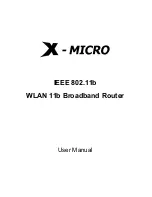
Description
7-3
FDDI
The distance limitations to each media type are as follows;
These distances are decided by ANSI, a standards-making body which has
created boundaries within which FDDI networks may be designed.
Rings and Devices
FDDI is based on the creation of dual counter rotating rings. These rings provide a
primary data path, just as in Token Ring, and a secondary data path. In the event
of a fault in the primary path, the FDDI signals loop back onto the secondary ring
in order to keep the ring whole. Stations which attach to these dual rings are
called Dual Attached devices and include Dual Attached Stations (DASs) and
Dual Attached Concentrators (DACs).
The FDDI dual counter rotating rings are created by connecting the A/B ports of
the FDDI DAS and DAC modules to each other. Connections are made in a logical
ring, from B ports to A ports. It would, therefore, be possible to ring cables
directly from the B port of the hub in Department X to the A port of Department Y,
from the B port of department Y to the A port of Department Z, and so on, and so
on.
Dual Attached Stations are single stations on the FDDI rings. DAS connections are
usually reserved for mission-critical application stations such as medical or
laboratory safety monitors. More often, hubs are connected to the dual rings due
to the cumulative importance of the other stations attached to them.
a. Category 5 UTP cabling only
b. IBM Type 1 STP cabling only
Table 7-1. FDDI Distance Limitations
Media
PMD Standard
Max Link Distance
Fiber Optics (Multimode)
MMF-PMD
2 Km
Fiber Optics (Single Mode)
SMF-PMD
60 Km
Unshielded Twisted Pair
a
TP-PMD
100m
Shielded Twisted Pair
b
100m
Summary of Contents for MMAC-5FNB
Page 1: ...Cabletron Systems Networking Guide MMAC FNB Solutions ...
Page 2: ......
Page 4: ...ii ...
Page 10: ...viii ...
Page 188: ...Expansion Ethernet 8 12 Port Assignment and Virtual LANs ...
Page 194: ...Expansion Token Ring 9 6 Port Assignment ...
















































